We rode over 2000 kilometres in order to crown our Race Bike of the Year
We test race machines from Specialized, Giant, Canyon, Enve and more...but which superbike came out on top?
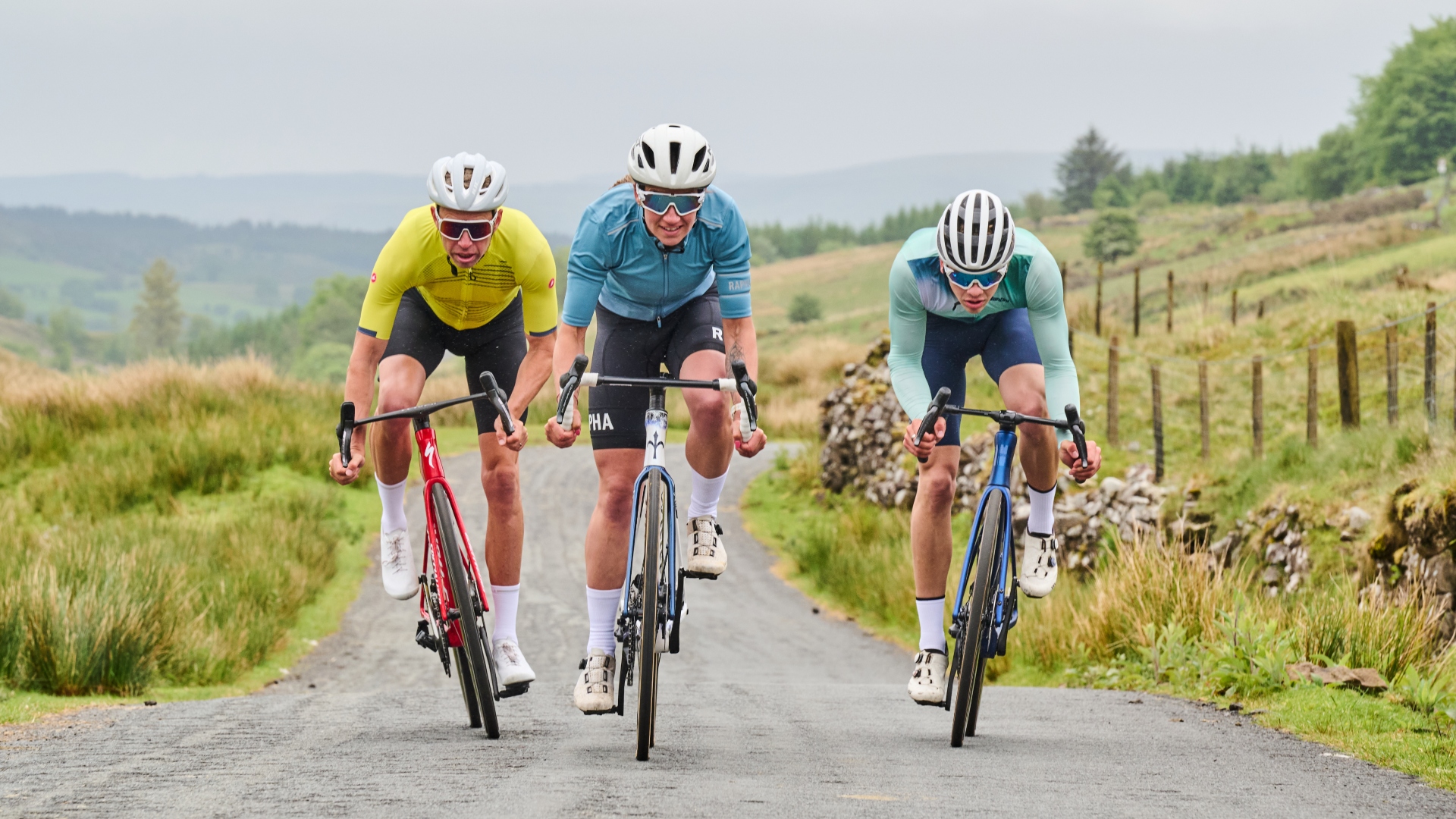
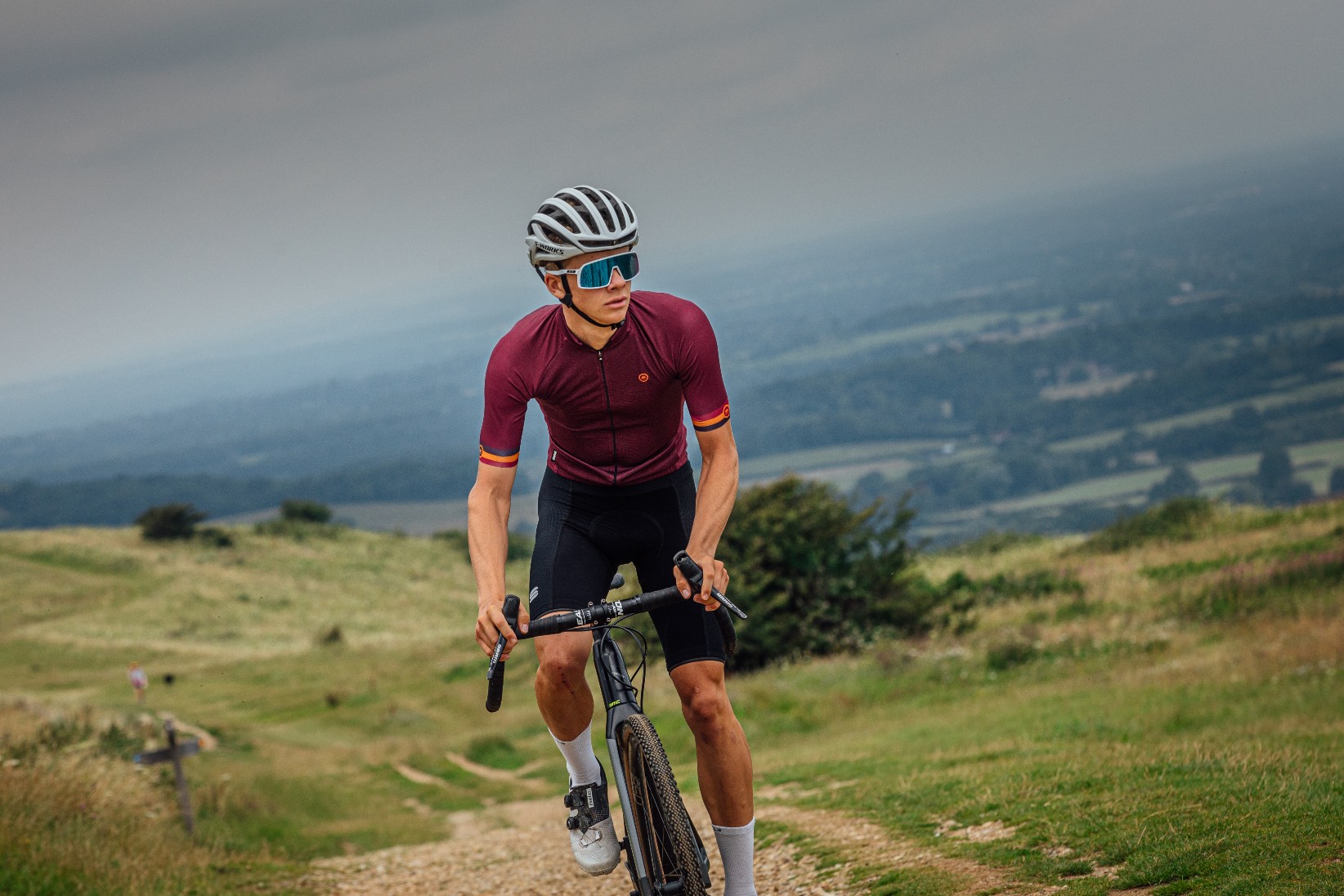
After countless hours in the saddle, rigorous scrutiny, and extensive deliberation among the Cycling Weekly Team, we're ready to crown the 2024 Race Bike of the Year.
Before we reveal our top picks, let's explore our stringent selection and testing criteria, providing context for the ever-evolving landscape of modern race bikes.
Our primary selection criterion is that bikes must be raced at the highest level. Eight of our nine contenders are currently being ridden at WorldTour level, with the exception of the Envee Melee, which will ride the Tour de France with Pro Continental team TotalEnergies. For instance, the Specialized S-Works Tarmac SL8 is favored by multiple top teams—four, to be precise.
This requirement, alongside the inclusion of the Van Rysel RCR Pro, creates what would have been a juxtaposition just a few years ago. Now, however, the RCR Pro is the weapon of choice for elite riders like Ben O'Connor and Aurélien Paret-Peintre - and perhaps the hottest topic of 2024 so far.
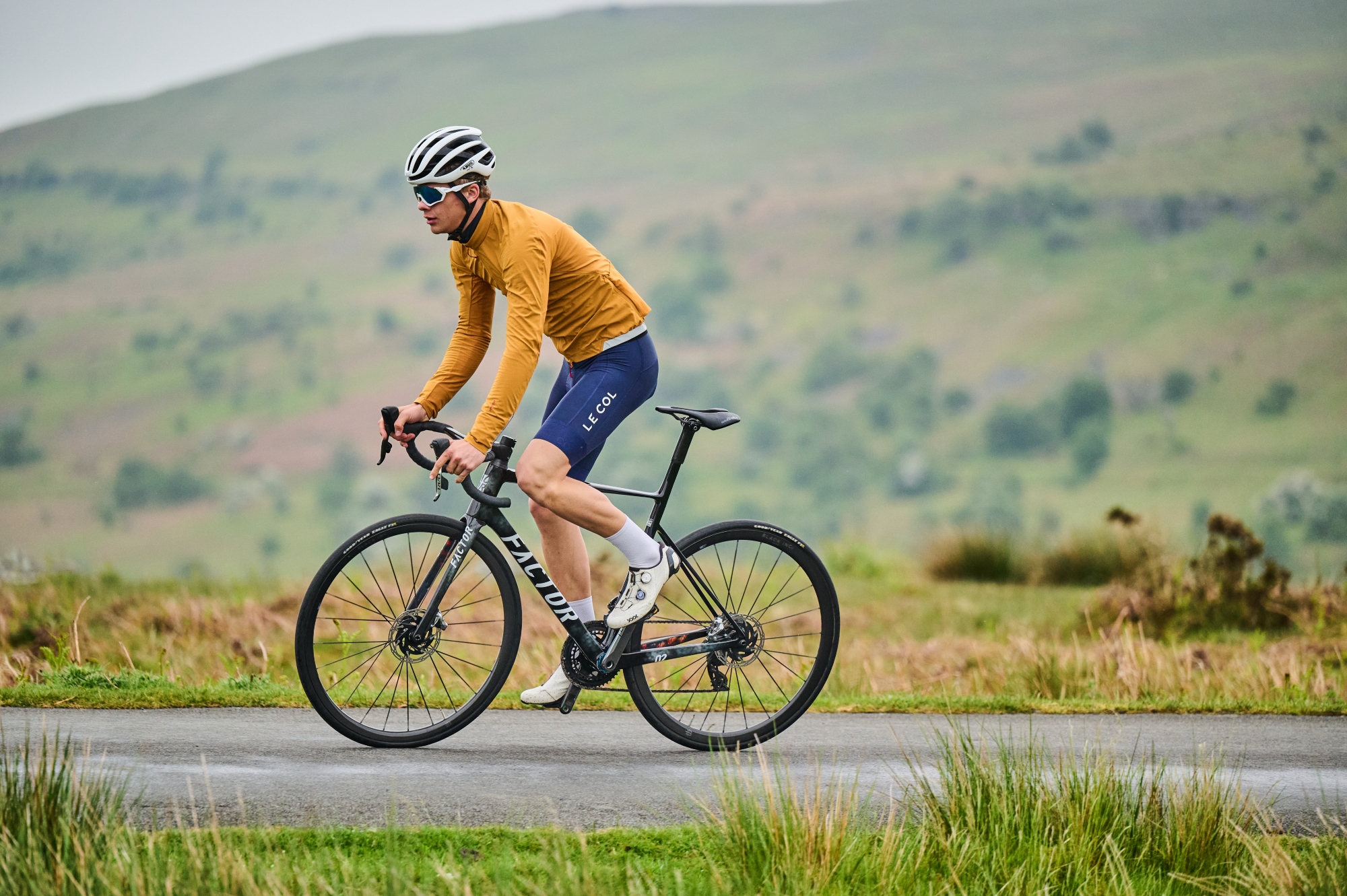
Whenever possible, we have selected the most prominent bikes released in the past twelve months. However, this is not an exclusive rule. Our test includes models like the Merida Scultura and Canyon Ultimate CFR, which, despite not receiving recent updates, remain competitive at the sport's highest level, being raced with great success by the likes of Matej Mohoric, and Jay Vine.
Though the market has started to lean back towards a single race bike instead of the two-pronged setup of aero and climbing bikes, there are still brands in our list that make a number of bikes used at WorldTour level. In such cases, we've chosen the bike that stands out and best showcases the latest technology. For example, the new Giant TCR is an obvious choice over the slightly older Giant Propel, and the Canyon Ultimate, an all-round race machine, provides stiffer competition against the Van Rysel RCR Pro.
This brings us to perhaps the biggest change in the bike industry over the past year - the battleground for improvement is shifting. The days of gangbuster aero claims of 15 watts at 45 kph are gone - well at least if the truth is being told. With aerodynamics now well understood through advanced technology and iterative design, it has become a standard consideration for any bike. A glance at the WorldTour reveals that bikes are looking more similar than ever, with manufacturers converging on what makes a fast bike. So, what separates the best from the rest?
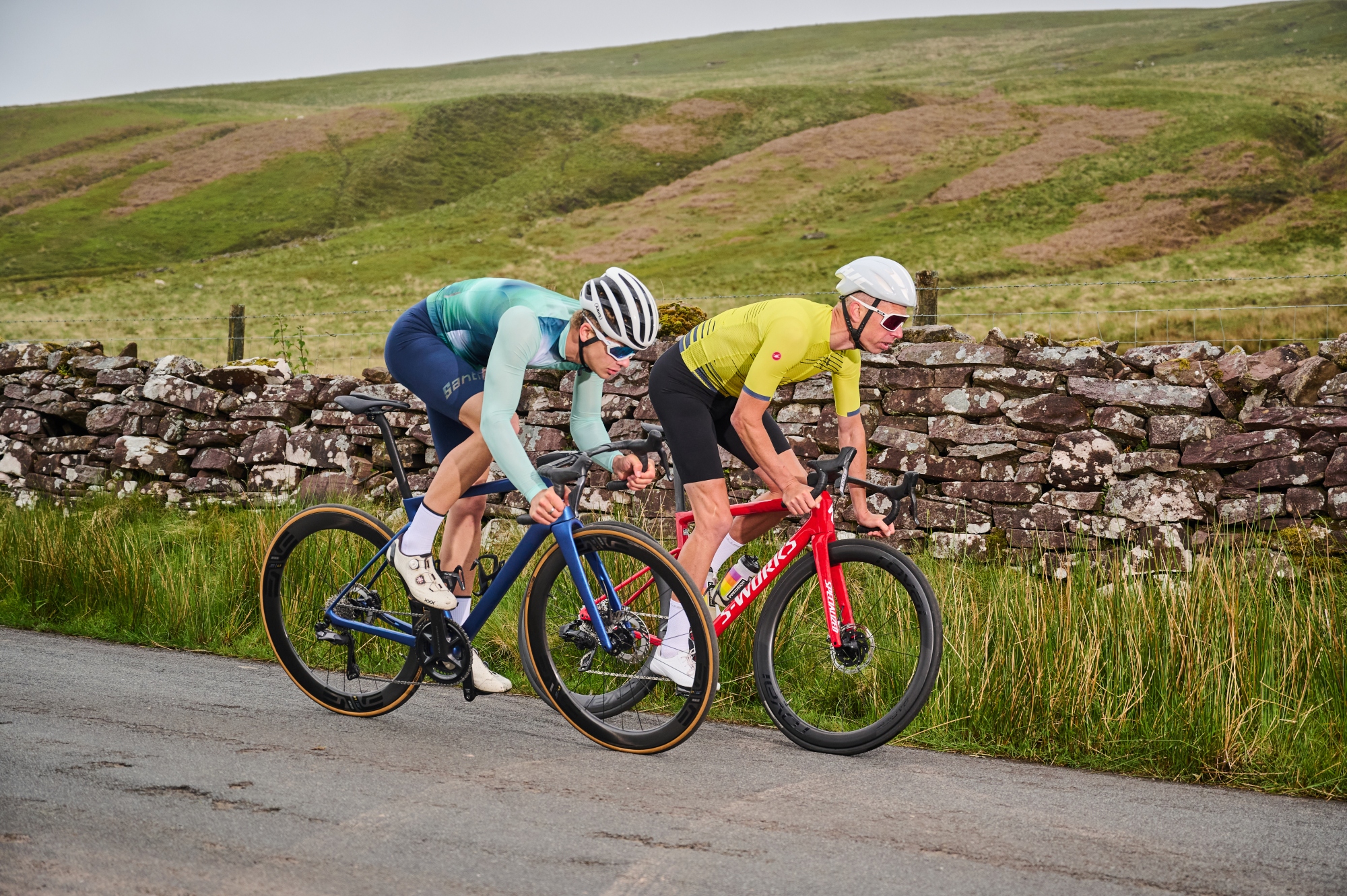
Nowadays, the beating heart of a bike is more crucial than ever. As tube shapes become routine, the real engineering marvel lies beneath the paint. The carbon layup can make or break a bike, and having the quality control to push the limits of material science is what truly sets a bike apart, which makes our job of paramount importance - more than ever before.
When our tester Joe Baker used to work at a bike shop, there was a strict policy of customers riding bikes before the point of sale to truly understand the character of a bike beyond the stats sheet. In the modern-day age of low-budget carbon frames and cutting-edge material science, this should only be adhered to more strictly.
We are lucky enough to ride a vast number of bikes here at Cycling Weekly, and as such, we are able to truly delve deep into the sole of each and every bike we test. Pushing the limits, sometimes with limited mechanical sympathy in your best interest is what we do best, and it allows us to really separate the best from the rest - brands, claims, and aesthetics aside.
So, after many hours of dodging potholes and deliberating, we've arrived at which model is the worthy winner of Race Bike of the Year, as well as those that took first place in the Best Aero Bike, Best Value Bike, Most Desirable and Best Climbing Bike categories. But first, a word on the other contenders...
Cycling Weekly's Race Bike of the Year
Wilier Filante SLR
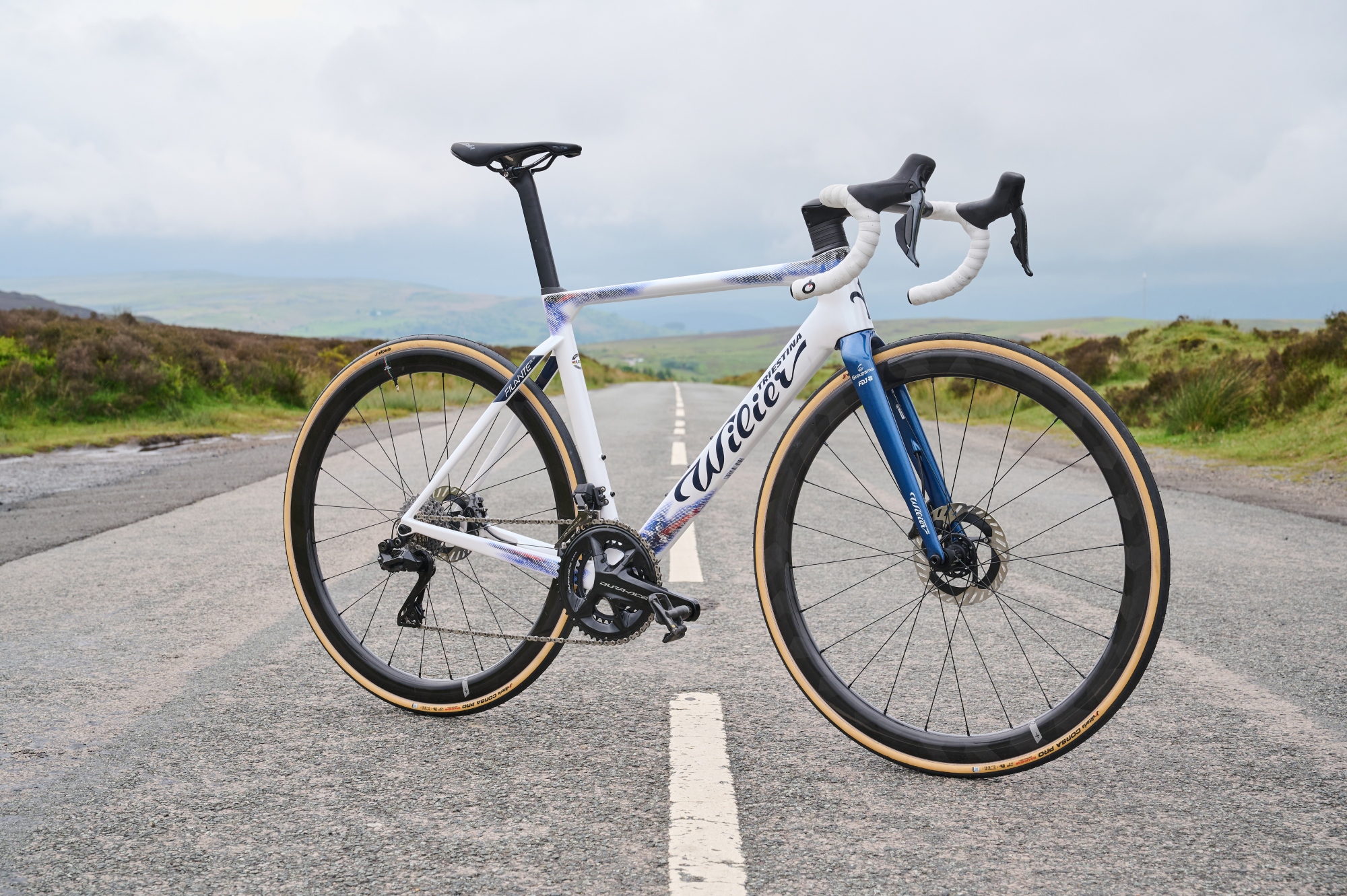
The Wilier Filante SLR has more than stood the test of time - if anything it’s aged like a fine wine. It’s been the weapon of choice for Mark Cavendish, who got so tantalizingly close to claiming that illusive 35th stage win.
Unsurprisingly, the Filante SLR remains a formidable contender in today's fiercely competitive market. Early to embrace the 'aero, lightweight, choose both' philosophy, it boasts an elegant frameset equipped with modern bike features. Its angular front end, crowned with Wilier's sleek one-piece handlebar and stem, adds to its allure. The combination of ideal geometry and stiffness makes it a sprinter's delight, while the flat-topped bar provides a comfortable platform for those seeking the banned 'puppy paws' position, and normal hand placement alike. It’s a comfortable bike too, a smooth ride, courtesy of those dropped rear seat stays.
It’s a case of oh-so close, in almost every category for the Filante. Near on 120 years of brand history has created both a work of art and a magnificent riding experience, but it gets surpassed, just fractionally, by some of the competition. That said, it’s still a worthy contender - slicing through the wind with supreme efficiency, and tackling climbs with vigor.
- Price tested: £11,999 / $13,700
- Weight: 6.32kg
- Groupset: Shimano Dura-Ace Di2
- Wheels: Wilier SLR42KC Carbon
- Tires: Vittoria Corsa Pro 28mm
- Handlebars: Filante Carbon
Van Rysel RCR Pro
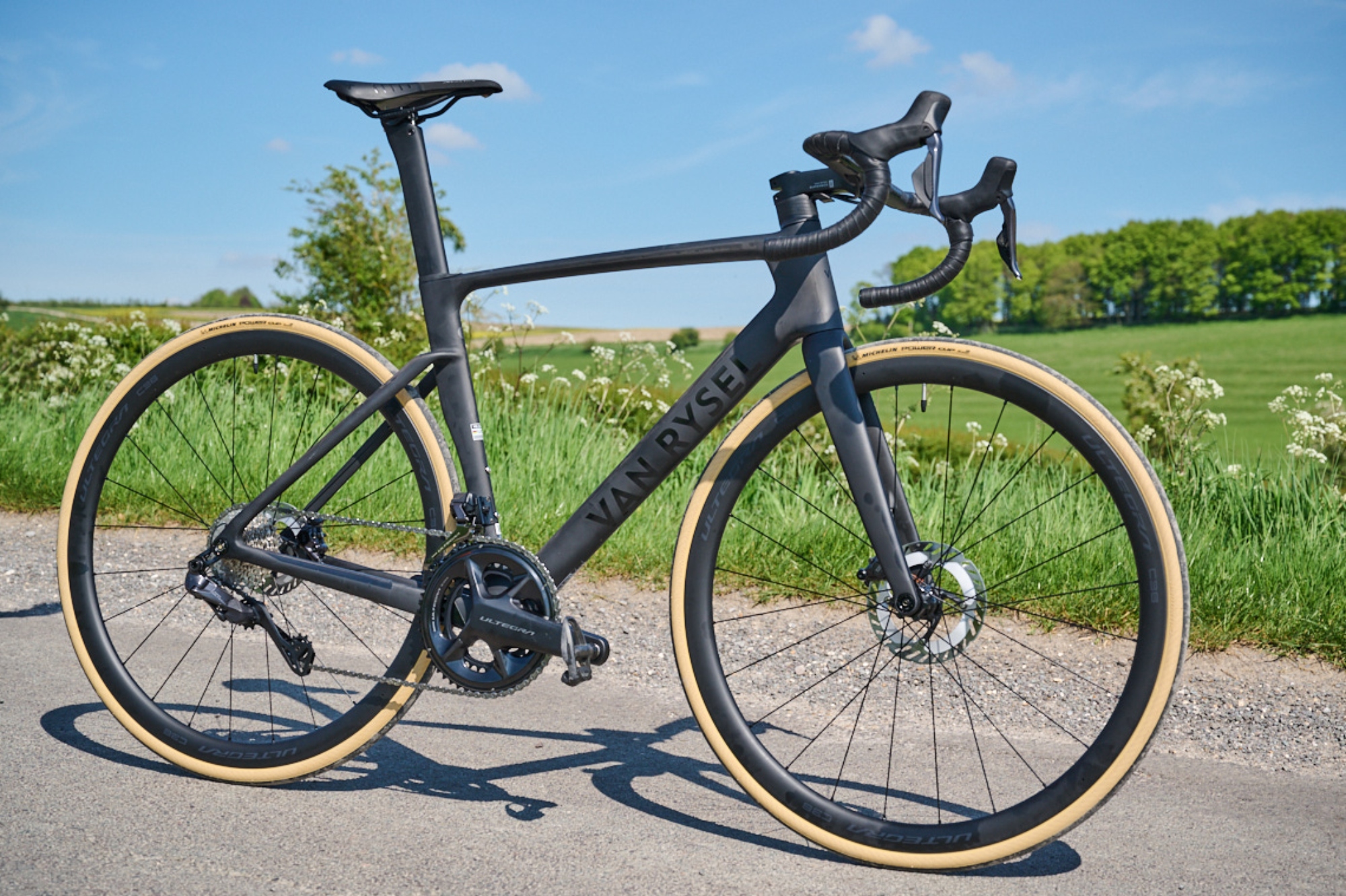
The Van Rysel RCR Pro is undeniably the most hyped bike of 2024. As the steed of choice for Decathlon AG2R this year, the RCR Pro boasts a spec sheet that makes it particularly enticing - so much so that pre-orders of the top model sold out in just two hours back in April. With such buzz surrounding it, I was eager to pit it against the biggest names in the business to answer the burning question: is it truly the superbike killer?
At first glance, its modern aesthetic, reminiscent of the Specialized Tarmac SL7, and an impressive claimed frame weight of 810 grams, set high expectations. Yet, I'm not entirely convinced by Oliver Naesen’s bold claim that it would 'turn the market upside down.'
Make no mistake, the RCR Pro is a premium race bike, but it failed to ignite the same passion in my riding that other bikes set off - a critical element for someone with a high-level racing background.
Designed in collaboration with French aerospace experts Onera, Van Rysel aimed to create a race bike that teetered on the UCI’s 6.8kg weight limit while retaining aerodynamic prowess. The bike’s narrow head tube and elongated tube profiles indeed translate to a smooth, swift ride feel, but my issue lies in how it gets up to speed.
From the very first ride, the bike lacked the responsiveness I’ve come to expect from top-tier models. This wasn’t a question of raw performance - there’s no denying the RCR Pro is fast, as evidenced by its summit finishes this year - but rather a matter of ride feel. The bike seemed slightly lethargic when sprinting, a crucial moment when immediate power transfer is paramount. On steep climbs, it told a similar story, lacking the firm footing of the thoroughbred climbers in our test. Paradoxically, this also made it one of the most comfortable bikes I’ve ridden.
However, flip those gradients, and the RCR Pro begins to shine. Its slightly longer 410mm chainstays offer a stable base during descents, especially at high speeds, and the front end exudes confidence. The bike’s safe, assured handling allowed me to push its limits on technical sections, although if you’re looking for a bike that changes direction as quickly as a housefly, the Van Rysel might not be your perfect match.
Ultimately, the RCR Pro excels in certain areas while falling short in others. It’s a well-engineered machine with a lot to offer, but it may not revolutionize the market as some have claimed. For those who prioritize comfort and stability, especially on descents, this bike is a worthy contender. For those seeking razor-sharp responsiveness and explosive power transfer, there might be better options out there.
Read our full Van Rysel RCR Pro Review
- Price tested: £5,500 / $6,999 with SRAM Force
- Weight: 7.28kg
- Groupset: Shimano Ultegra R8170 Di2
- Wheels: Shimano Ultegra 8170
- Tires: Continnental GP 5000s 28mm
- Handlebars: Deda SuperZero RS
Factor O2 VAM
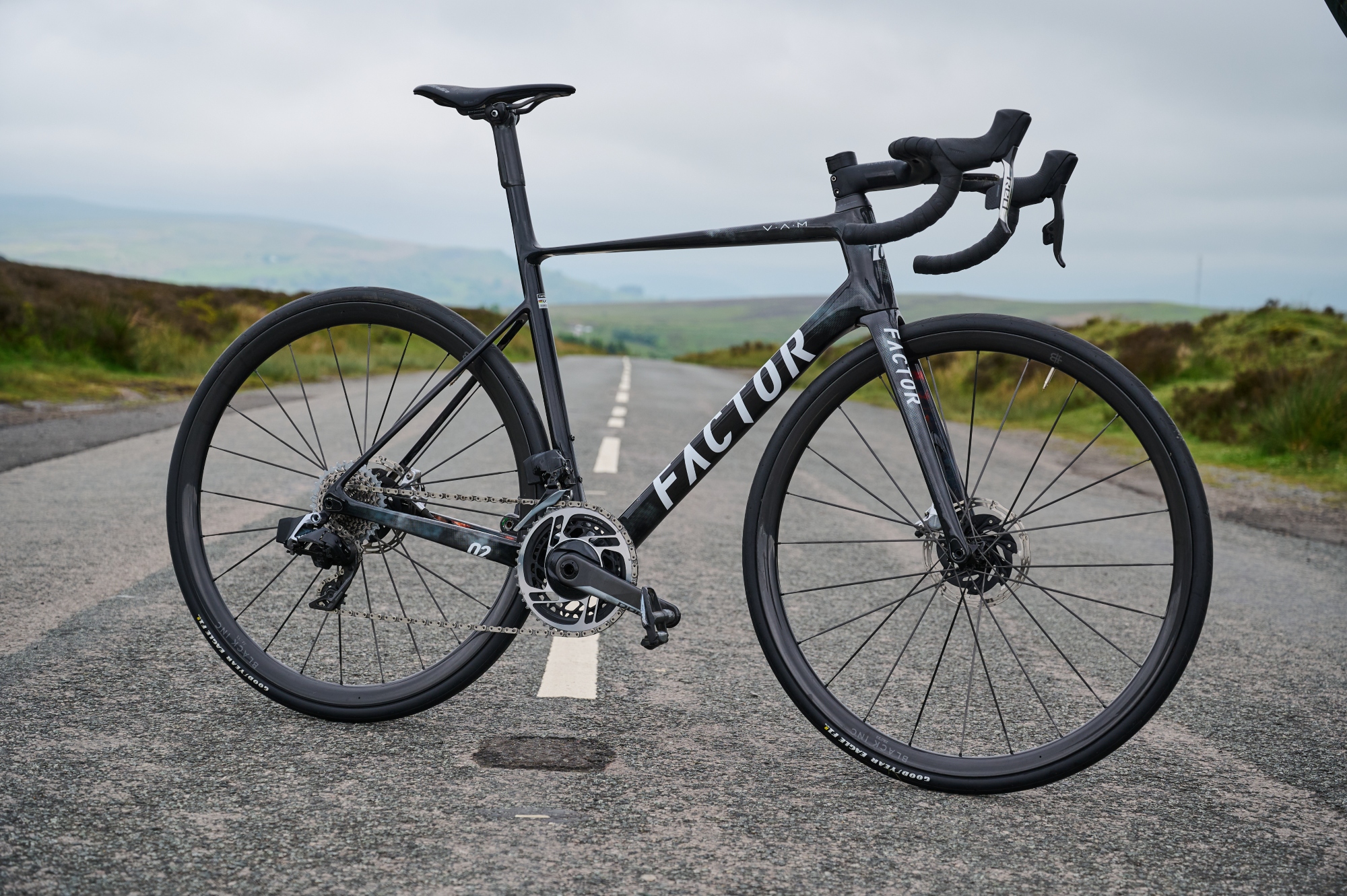
The Factor O2 VAM felt like home from the first ride. Having spent an entire race season in Italy on the previous generation O2, I instantly recognized the same beloved geometry from 2022. The O2 VAM builds on this platform, and then some.
Weighing in at a mere 730 grams for a size 54, this frameset is the third lightest in our test. Despite its featherweight build, Factor has addressed the head tube stiffness concerns I had with the previous model.
Factor has vastly improved the O2 VAM's handling by reinforcing the head tube area. The result? One of the best-handling bikes I've ever ridden. Although it doesn't deliver the same razor-sharp power transfer as our top climbing bike, Factor has expertly tuned the O2 VAM for electric climbing performance, and sheer fun. Our complete build, featuring a Black Inc cockpit with stellar geometry and width choices and lightweight wheels, tipped the scales at just over 6kg and was as thrilling as you might imagine.
Race bikes should be fast, but for those of us investing serious money, enjoyment is key. Factor has crafted a wild, exhilarating machine in the O2 VAM, and I absolutely love it!
- Price tested: £11,999 / $12,999
- Weight: 6.32kg
- Groupset: SRAM Red AXS
- Wheels: Black Inc 28/33
- Tires: Goodyear Eagle F1
- Handlebars: Black Inc
Canyon Ultimate CFR
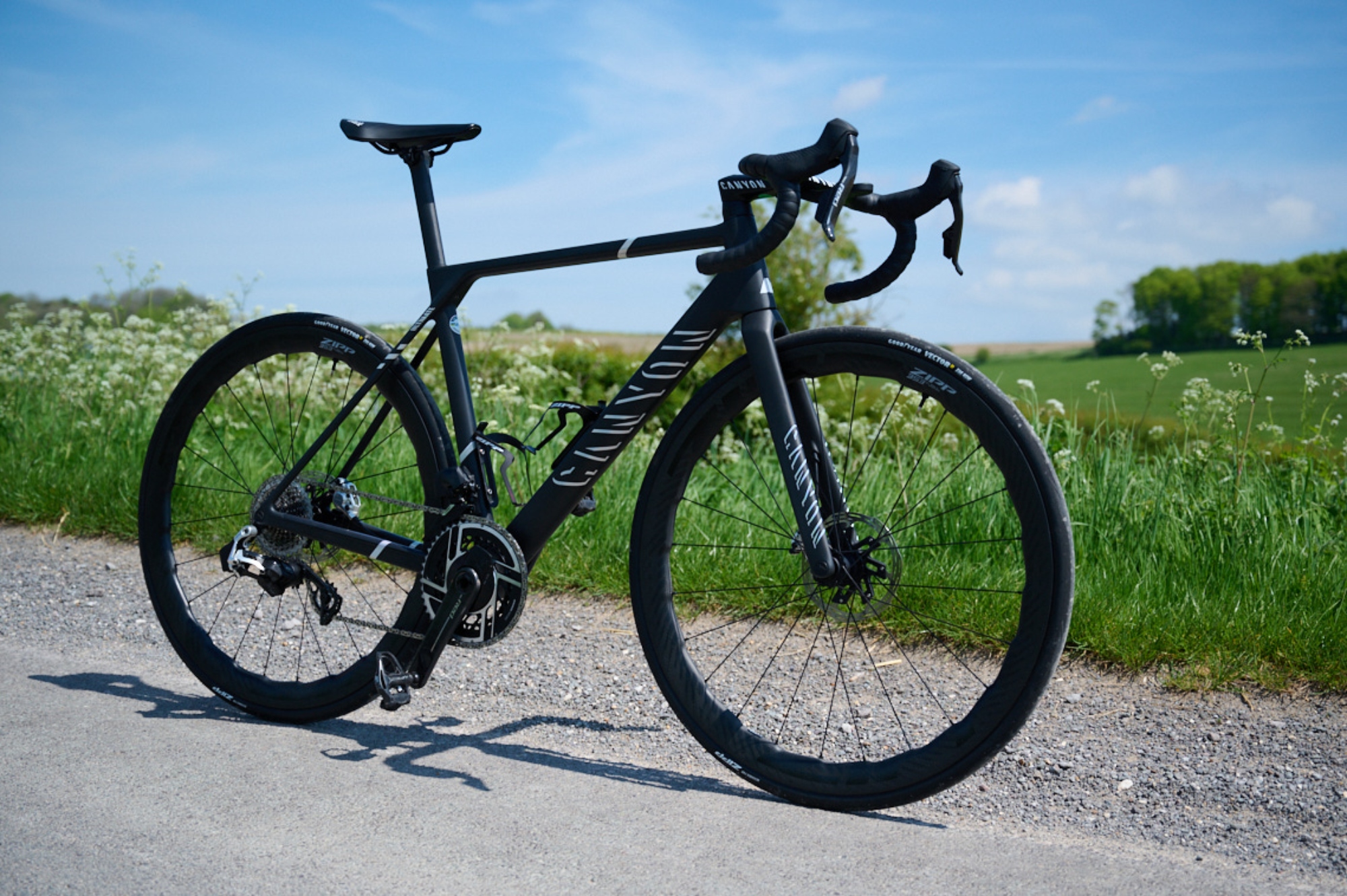
The Canyon Ultimate CFR is another platform that has stood the test of time. The latest iteration of the Ultimate has been the choice of Alpecin-Deceuninck for well over twelve months now, in which time it has racked up a whole host of wins on the sport’s biggest stage.
Canyon as a brand, is synonymous with value thanks to a direct-to-consumer approach, and with the Ultimate CFR, it’s no different. Our range-topping model, complete with brand new SRAM Red AXS and Zipp 353 NSW wheels comes in at $10,499 / £9,999. Of course, this is far from petty cash, but it still undercuts the likes of Specialized by around two thousand dollars or pounds.
The slightly more wallet-friendly price tag doesn’t seem to affect the ride quality either - the Ultimate CFR has impressed me from start to finish. The bike provides a springy, yet resilient ride quality, soaking up bumps without hindrance to power transfer. Integration is great too, thanks to the CP0018 adjustable one-piece cockpit. As a package, Canyon has put together a magnificent bike, but I do think it would benefit from slightly shorter chainstays to really bring the handling to life on meandering tarmac.
- Price tested: £9,999 / currently on sale for $9699
- Weight: 6.85kg
- Groupset: SRAM Red AXS
- Wheels: Zipp 353 NSW Hookless
- Tires: Pirelli P Zero Race LR Classic 30mm
- Handlebars: Canyon CP1008 Aerocockpit
The Awards
Overall Winner - Specialized S-Works Tarmac SL8
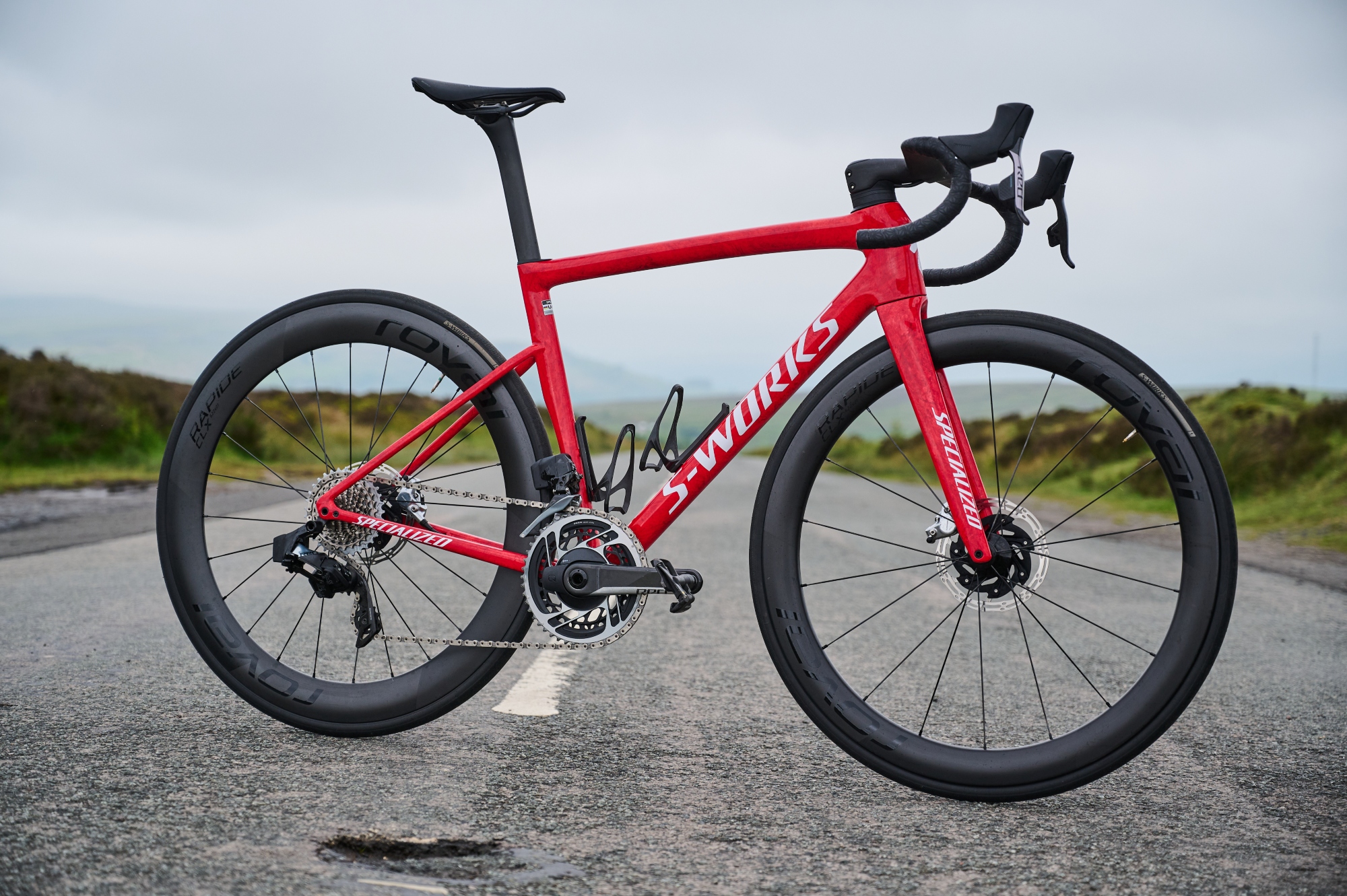
Cycling Weekly’s Race Bike of the Year is the Specialized S-works Tarmac SL8.
But hold on, it would be an easy choice for us to pick the most marketed bike of the last 12 months, made by one of the biggest names in the business as our Race Bike of the Year, so let's delve in with a fine tooth comb to see what really sets the SL8 aside from the rest.
Upon its release, the SL8 was met with harsh criticism around whether or not it was a significant upgrade over the outgoing SL7. Having put well over one thousand kilometers on the new bike, I can firmly say that it is; in fact, it sets a new standard in our industry.
The updated SL8 really began the trend of the move back towards a 'one bike to do it all' philosophy and marks a new era for the cycling industry in terms of both aerodynamic understanding, and carbon fibre mastery. Specialized began the development of the SL8 by pasting the carbon layup from the ultra-light Aethos onto the SL8’s frame shape, and slowly adding material bit-by-bit to achieve the stiffness required for a modern-day race machine.
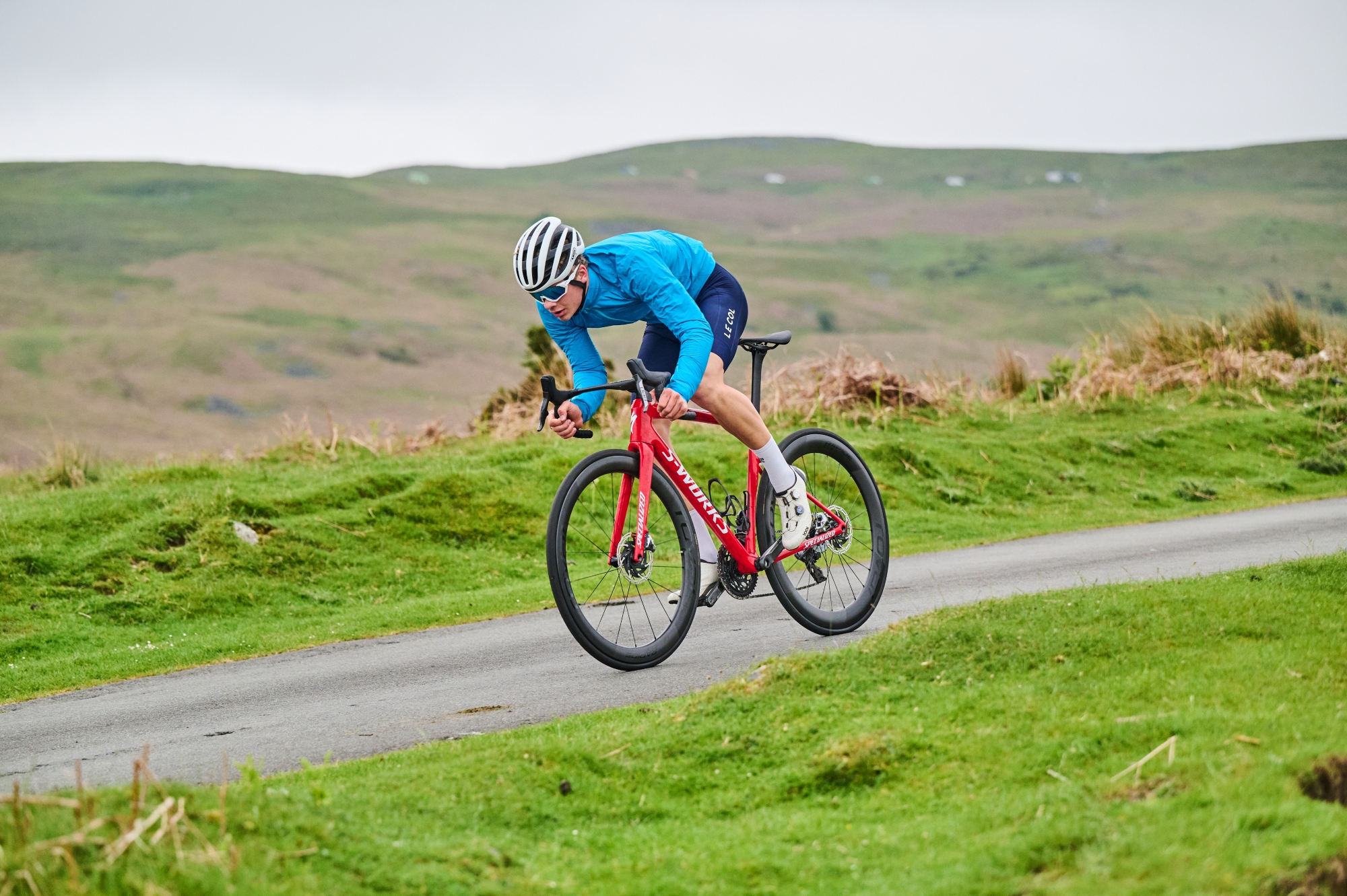
Over 50 computational iterations eventually led to the production frame, which weighs just 685 grams for a size 56 (painted), something that, when contextualized with how this bike rides, is truly staggering.
More impressive though, is the increase in stiffness that goes alongside the weight reduction. Specialized claims a 33% increase in stiffness-to-weight ratio - that’s a raw stiffness increase too. Vertical compliance has also seen a 6% reported rise, something which, as we will come onto, is not to be sniffed at.
Put all this technology on a quality road in the Brecon Beacons mounains, and you are in for an absolute treat. The SL8 boasts a poised demeanor and effortless acceleration. Its compliance lends it a distinct smoothness, while its feathery design ensures it floats over the road with the ease of a whisper, making every ride a delightful experience in speed and agility.
With our test bike weighing in at a rather slight 6.62kg for a size 54, the bike climbs exactly as you would expect. Super short 405mm chainstays, coupled with an unyielding bottom bracket allow rider and bike to tango up the steep gradients in perfect harmony. The duet continues when you summit the climb too. The super short 978mm wheelbase of the SL8 makes for probably the quickest handling bike on test too, handling corners with a surgical level of immediacy and precision.
However, the Tarmac's true ace in the hole lies in its ability to maintain it’s speed. The seamless fusion of stiffness and aerodynamics proves invaluable on undulating terrain and actually translates to real-world racing scenarios where every small acceleration conserves precious energy. After taking every bike on test on at least one faster group ride, the Tarmac became my default for tackling our chaingang, even though it’s traditionally an ‘Aero bike’ biased route.
In terms of climbing prowess, the Giant TCR and the Specialized Tarmac SL8 really are neck and neck, yet on the flat, the SL8 simply pulls away. After all our testing and scrutiny, if I was going to try and survive a Grand Tour, there is only one bike I would do it on, and that’s the Specialized S-Works Tarmac SL8.
- Price tested: £12,000 / $14,500
- Weight: 6.68kg
- Groupset: SRAM Red AXS
- Wheels: Roval Rapide CLX 11 51mm
- Tires: S-Works Turbo Rapidair 2BR 26mm
- Handlebars: Roval Rapide cockpit
Best Aero bike - Look 795 Blade RS
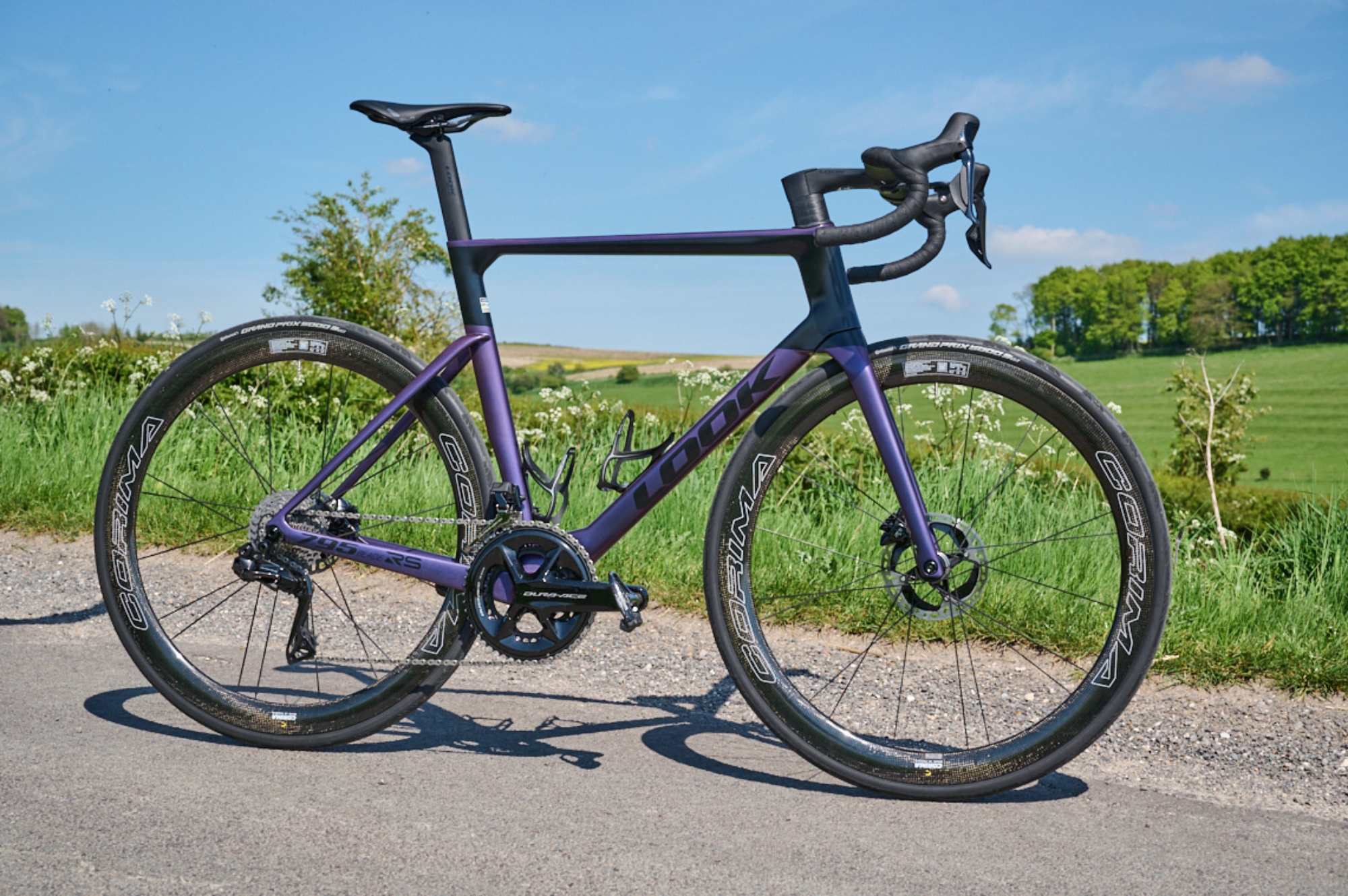
Aero bikes
Aerodynamics are a primary consideration for all modern race bikes. In fact, almost every bike we test is a product of computational fluid dynamic models, which are often tested rigorously wind tunnels in an effort to save watts wherever possible.
So how do we classify an aero bike, from say a modern all-rounder? Certainly, the lines are more blurred than they used to be; Specialized, for example, dropped its dedicated aero bike, the Venge, from its line-up a while back, deciding instead to imbue the Tarmac with many of its drag-reducing benefits. But while deep-section tube shapes and integrated cabling are features shared across all of our bikes here, Look’s Blade 795 RS stands out.
With a focus on straight-line speed over flatter terrain, it's a bike that sprinters and rouleurs alike should relish. Its stiffness - particularly in the bottom bracket area - is absolute. It translates to both planted handling and an impressive top-end speed. But why it also gets our vote is that it delivers all of this without the harshness often associated with aero bikes.
When Look launched the Blade 795 RS at the 2023 Tour de France, it followed the growing trend of a move towards less ostentatious and more focus on optimal aero design. Rather than opt for vast truncated tube profiles, Look has refined smaller tube profiles to create a bike that is said to be more efficient throughout a race, rather than a one-trick pony - so why does it take the crown for Best Aero Bike, I hear you ask?
The updated frameset, though rather slender, is still 945g for a size medium, which is over two hundred grams more than other performance bikes in this list. However, all that extra material is put to incredibly good use.
Look has used its Ultra High Modulus carbon fibre on the Blade 795 RS, for “optimised responsiveness, efficiency, and comfort,” and it shows. The 7% increase in bottom bracket stiffness is strikingly apparent both over the outgoing bike and its competitors on test, making it a force to be reckoned with in a race scenario.
Sprinting quickly revealed the bike's ability to accelerate without any hint of movement from the bottom bracket, something which my 1500-watt sprint ( sadly, my only remaining impressive power figure) can often make bikes come unstuck.
The same material science wizardry makes climbing impressively manageable too. While you do notice the added weight over slighter bikes, 7.48kg for our build, the bike manages to hide it well, maintaining a smooth, magic carpet-like ride feel, that can’t wait for the Flamme Rouge.
Read our full Look 795 Blade RS Review
- Price tested: £ / $11,000
- Weight: 7.48kg
- Groupset: Shimano Dura-Ace Di2
- Wheels: Corima 47mm MCC Evo Tubeless
- Tires: Continental GP500s 25mm
- Handlebars: Look Combo Aero Carbon
Most desirable - Enve Melee
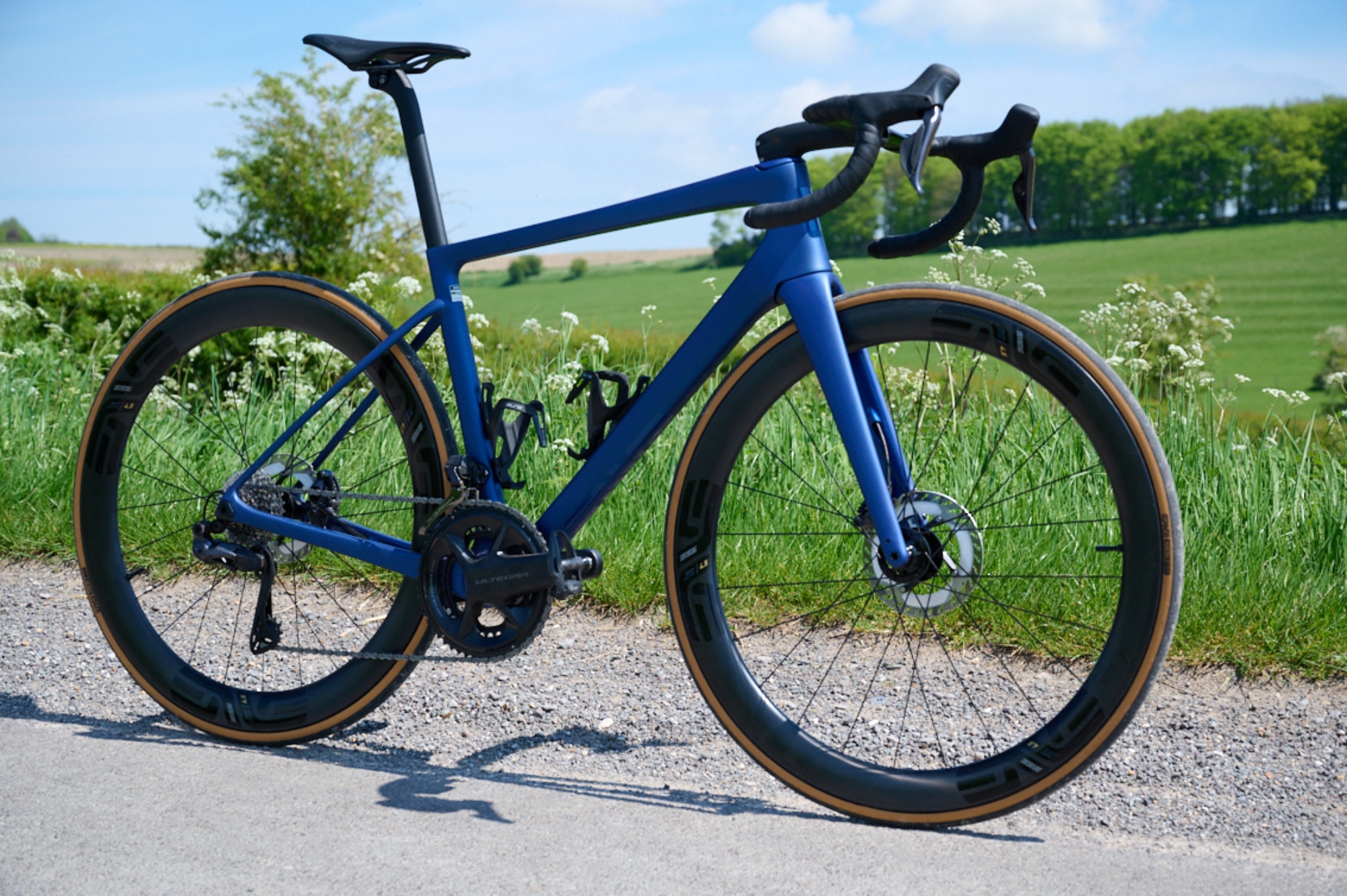
Most desirable
What makes a race bike desirable? Naturally, it needs to ride exceptionally well, but desirability is down to more than this alone.
Why we are drawn to one machine above all others is largely subjective. Aesthetics are vital of course; it needs to not only catch our eye but retain our attention mile after mile. But then there are the subtleties, the nuances and the intangibles, which is where the Enve Melee excels.
Like a cashmere sweater made from the best-grade yarn and woven in Scotland on age-old looms, it doesn’t need to shout to get our attention. Instead, its class - and its confidence - is derived from a combination of understated branding, quality workmanship and the brand’s cachet. While the US-based company now provides framesets and components for WorldTour teams - and has expanded its factories outside of Utah into overseas - it’s maintained its boutique status. Turn up to a club run on the Melee and it's likely to be the talking point among a sea of familiar bikes that have long since exhausted conversation.
When the Enve Melee graced the Cycling Weekly offices, I was immediately captivated by its allure - a true picture-perfect pedal machine. Its deep satin blue hue, complemented by the sleek gloss black Enve SES 4.5 wheels and accented with tan sidewall tires, presented a striking visual feast. Yet, my initial excitement was tempered by a hint of skepticism - Enve, renowned for crafting top-tier components, has not long been in the frame industry, so could it deliver?
To my delight, the Melee exceeded all expectations, defying any reservations I harbored. But before delving into its merits, let's contextualize the Enve Melee's uniqueness, for it stands apart from its peers in several notable ways.
Making its WorldTour debut this year, the Melee boasts mudguard mounts, and cockpit customization at the point of sale, thanks to bikes being sold as a frameset or rolling chassis. Combined with clearance for 35mm rubber, the Melee oozes versatility.
Put plain and simple, the Enve Melee is one of my favourite bikes to date. Get it up to speed, and you’ll experience an airborne sensation similar that’s more akin to a time trial bike, all wrapped up in serene supple ride quality. It truly is a sublime bike to ride. Enve has managed to carefully surf the knife edge of stiffness and comfort with the Melee, giving it an imperious ride feel, and all-day, all-surface comfort.
While its climbing prowess may not match some lighter contenders, the disparity is negligible in real-world scenarios, and only noticeable when riding the bikes back to back. Descending, however, is where the Melee truly shines, effortlessly gliding through winding bends with grace and finesse, delivering an unparalleled blend of speed and exhilaration.
Yet, perhaps the Melee's most enchanting aspect is the post-ride reverie it inspires. After conquering varied terrains with effortless grace, one is rewarded with the serene beauty of this machine, a spectacle to behold while unwinding at the café.
- Price tested: £10,400 / $10,645
- Weight: 7.56kg
- Groupset: Shimano Ultegra
- Wheels: Enve SES 4.5
- Tires: Enve SES 29mm
- Handlebars: Enve In-Route Aero Cockpit
Best Climbing Bike - Giant TCR Advanced SL 0
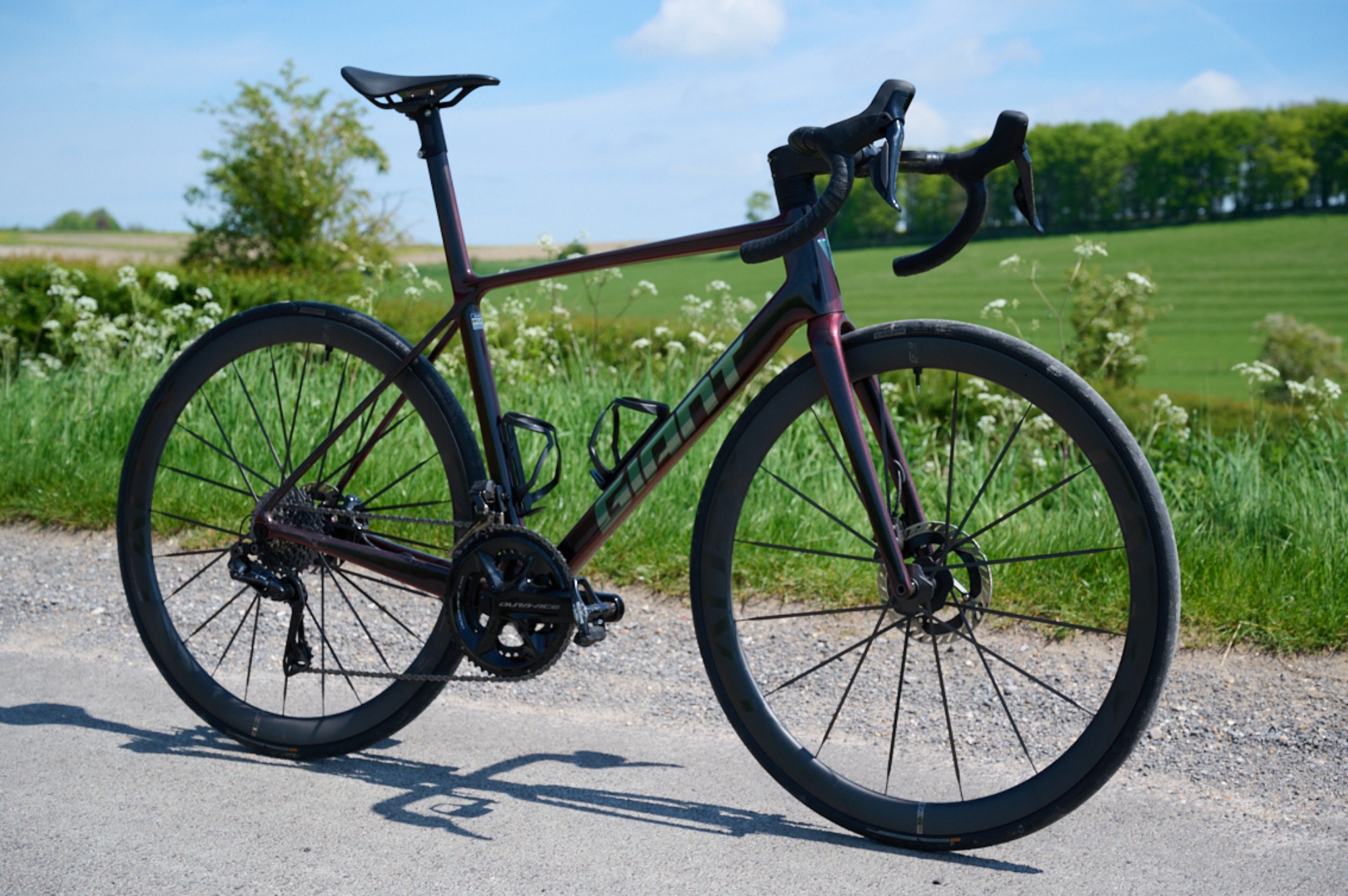
Climbing bikes
Traditionally slender tubed and shallow-wheeled, a featherweight climbing bike is the go-to option for riders not wanting to compromise on the specialised discipline of riding uphill very fast. However, over the last decade, the line between climbing and aero bikes has become increasingly blurred as research and data demonstrate the benefits of having both features designed into one bike.
With the advancement of composite layup technology, the aerodynamic tubing profiles normally associated with more mass have become increasingly lightweight, enabling framesets to retain their climbing credentials while becoming increasingly aerodynamic.
The Giant TCR Advanced SL 0 is a prime example of this lightweight aero marriage. The light and stiff frameset delivers an incredibly responsive feel - super slippery yet instantly responsive to pedal power. This enables riders to benefit from the best of both worlds, making it a jack of all trades while continuing to be a master of climbing.
The Giant TCR Advanced SL 0 is the newest bike in this year’s awards, releasing just a couple of months ago back in March. Now in it’s tenth incarnation, the TCR has seen thirty years of refinement, with a rich history of racing pedigree and revolutionizing geometry. It’s absolutely no surprise then, that the Giant TCR, once again is a hit - but there are more changes than meet the eye.
Similarly to this year’s winner - hold tight - the Giant TCR’s changes have occurred mostly beneath the paint job. A 4.2 watt power saving at 45kph over the previous model is overshadowed by a 75 gram weight saving off the frame, which brings an unpainted frame down to a feathery 690 grams in size 56, the second lightest on test.
Giant has also made the bike stiffer, albeit by just 0.53%. Tiny margins, but I must say they amount to a truly splendid package, evident nowhere more than on steep climbs. The TCR, more than any bike on test presents a fizzing ride aura when you get out the saddle. Rather than lugging the bike behind you, the TCR invigorates you to keep pressing on.
What unquestionably sets this bike apart from fellow climbing bikes today, however, is how well the bike performs away from the steep gradients. Giant claims to have narrowed the gap to just five watts at 45kph between the Propel aero bike and the TCR, and it really shows. On fast group rides, the TCR was just as deadly when accelerating on the flat as it was on the climbs.
Once again the climbing bike formula of lightweight frameset, stiff bottom bracket, and fast handling culminates in a compelling ride experience. This bike runs our winner the closest race, and in truth, is probably a one-piece carbon cockpit away from a near-tied victory.
Read our full Giant TCR Advanced SL 0 Review
- Price tested: £11,999 / $12,750
- Weight: kg
- Groupset: Shimano Dura-Ace Di2
- Wheels: Cadex 40 Max Hookless
- Tires: Cadex Gavia Course 0 Tubeless 28mm
- Handlebars: Contact SLR
Best value - Merida Scultura 9000
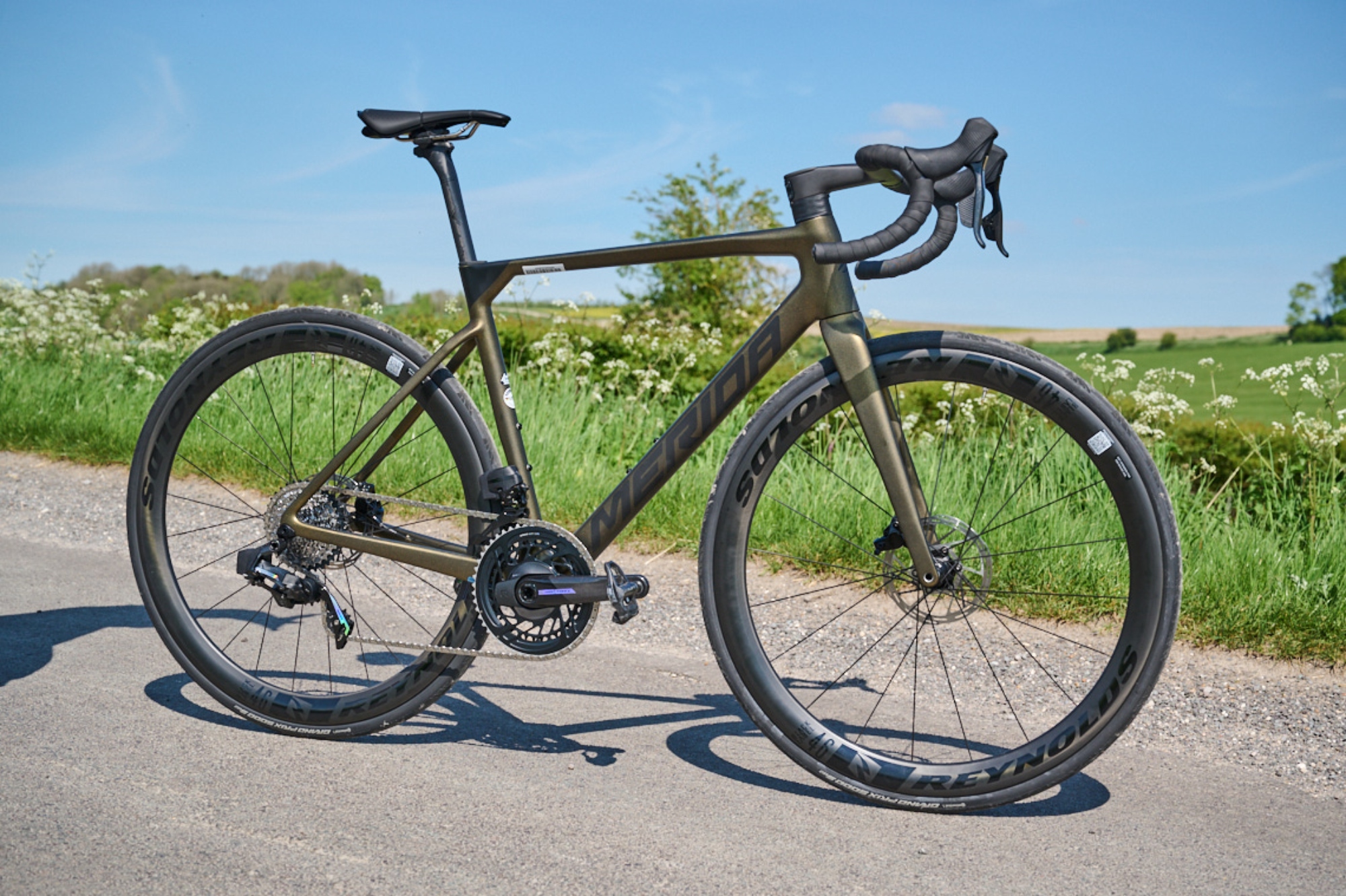
You might be questioning why our ‘Best Value’ award was not given to the Van Rysel RCR Pro. Surely this super bike-killing WorldTour machine is the best value bike on test, right? Once again, we need to dig deeper to uncover the truth beneath the paint.
Enter the Merida Scultura. Although it’s not the newest bike in our lineup, it captivated me, particularly when we compared its excellent race bike ride feel with its remarkably competitive price points across the range. Our test bike, the Merida Scultura 9000, was the second cheapest on test, at £6,749. Simply put, there was no linear relationship between cost and performance here.
Technically, the Scultura platform might seem a bit outdated, utilizing more rounded tube profiles that classify it as a climbing bike. However, when Merida gets this formula right, it becomes a stellar blueprint for an exceptional race machine.
Merida has mastered the fundamentals with the Scultura. Sharing a relatively traditional geometry with its aero counterpart, the Merida Reacto, it features a steeper 73.5-degree head angle paired with short 408mm chainstays, allowing for pinpoint cornering.
The Scultura truly shines when pointed uphill. In fact, Merida, in my view, may have misnamed its bikes - the Scultura is incredibly reactive! Out of the saddle, the bike remained tightly controlled when applying power, accelerating effortlessly from low speeds. The in-house cockpit provided by Merida enhances this experience, with the handlebar geometry allowing me to lean into the bike, delivering an inspired ride quality that encouraged me with every climb.
At speeds of 40 or 50 kph, the traditional tube profiles pose no problems. Our build came with excellent Reynolds wheels, and the concealment of cables and hoses created a clean, aerodynamic edge.
In short, the Merida Scultura was the surprise of the test. It offered an exciting, compliant, and most importantly, fast platform that was genuinely justifiable for the cost. With Ultegra builds available for £5,949, it comes close to the price of the RCR Pro in similar spec, yet outshines it on the road.
So, while the Van Rysel RCR Pro dazzles with its modern aesthetics and high-tech pedigree, the Merida Scultura, with its compelling blend of performance and price, earns our ‘Best Value’ award. It proves that sometimes, an older, well-crafted design can still outshine its flashier, pricier competitors.
Read our full Merida Sculptura 9000 review
- Price tested: £6,749
- Weight: 7.55kg
- Groupset: SRAM Force AXS
- Wheels: Reynolds BR 46 Pro DB
- Tires: Continental GP500s 28mm
- Handlebars: Merida Team SL 1P Cockpit
How we test
No variety of road surface, incline, corner or pothole escaped Joe Baker’s quest to discover which bike would be crowned Race Bike of the Year 2024. The poor chap rode until his legs almost fell off…
To evaluate this year’s stable of race bikes as fairly and as comprehensively as possible I subjected each to a variety of rides, tests and challenges. Without a doubt, the foundation for testing was simply putting the miles in, over various topography and in a wide range of conditions – not all of them pleasant! Most of the routes were in the beautiful, undulating English Cotswolds and stunning Welsh mountains of the Brecon Beacons.
As winter slowly advanced into spring this year, the weather conditions in the UK barely eased up, which gave me plenty of opportunity to test all the bikes on soaking-wet roads. Thankfully, as summer finally approached, I was able to venture out into the dry, which enabled me to put the hammer down at last.
For more specific analysis, I evaluated each bike on my go-to test circuit just east of Oxford. This 22km ride has a little bit of everything, including fast, flat sections, punchy inclines and some swift, flowing corners to gauge how well these bikes handle. Road surfaces vary throughout the route from smooth asphalt to rough vibration-inducing tarmac, with plenty of broken surfaces and, of course, potholes galore. Elevation is only 260m, but some of the steeper sections ramp up into double-digits - enough to have me out of the saddle, dancing on the pedals.
Additionally, I took each bike on at least one long 100km+ ride, plus a fast group ride or two. After many hours of dodging potholes and deliberating, I’d arrived at which model is the worthy winner of Race Bike of the Year.
Race Bike of the Year Specs
| Row 0 - Cell 0 | Specialized S-Works Tarmac SL8 | Enve Melee | Giant TCR Advanced SL 0 | Factor 02 VAM | Look Blade 795 RS | Wilier Filante SLR | Van Rysel RCR Pro | Merida Scultura 9000 | Canyon Ultimate CFR |
| Frame weight (claimed) | 685g | 850g | 690g | 730g | 940g | 830g | 790g | 822g | 762g |
| Bike weight (on test) | 6.68kg | 7.56kg | 6.42kg | 6.32kg | 7.48kg | 7.44kg | 7.28kg | 7.55kg | 6.85kg |
| Stack | 544mm | 539mm | 545mm | 552mm | 549mm | 538mm | 546mm | 557mm | 560mm |
| Reach | 384mm | 386mm | 388mm | 381mm | 391mm | 388mm | 388.2mm | 395mm | 393mm |
| Head angle | 73º | 72.4º | 73º | 72.5º | 73º | 72.5º | 73º | 73.5º | 73.25º |
| BB drop | 72mm | 73mm | 69.5mm | 70mm | 70mm | Row 6 - Cell 6 | 67mm | 66mm | 73mm |
| Wheelbase | 978mm | 991mm | 980mm | 985mm | 987mm | 990mm | 986mm | 990mm | 998mm |
| Chainstays | 410mm | 410mm | 405mm | 405mm | 410mm | 408mm | 410mm | 408mm | 410mm |
| Row 0 - Cell 0 | Specialized S-Works Tarmac SL8 | Enve Melee | Giant TCR Advanced SL 0 | Factor 02 VAM | Look Blade 795 RS | Wilier Filante SLR | Van Rysel RCR Pro | Merida Scultura 9000 | Canyon Ultimate CFR |
| Price | £12,000 / $14,500 | £10,400 / $10,645 | £11,999 / $12,750 | £11,999 / $12,999 | £11,237 / $11,000 | £12,890 / $13,700 with Dura-Ace Di2 | £9,000 / $10,999 | £12,890 | £9,999 / $9,699 |
| Groupset | SRAM Red AXS / Shimano Dura-Ace Di2 | Shimano Ultegra | SRAM Red AXS Quarq power meter / Shimano Dura-Ace Di2 FC-9200P power meter | SRAM Red AXS / Shimano Dura-Ace Di2 | Campagnolo Super Record EPS | Campagnolo Super Record | Shimano Dura-Ace Di2 & R9200-P power meter | SRAM Force AXS | SRAM Red AXS |
| Wheels | Roval Rapide CLX 11 Tubeless 51mm | ENVE SES 3.4 | CADEX 40 Max Hookless carbon | Black Inc 28//33 | Corima 47mm MCC Evo Tubeless | Wilier SLR42KC Carbon | Swiss Side Hadron² 500 Ultimate wheels 50mm | Reynolds BL 46 Pro DB | Zipp 353 NSW Hookless |
| Tires | S-Works Turbo Rapidair 2BR 26mm | ENVE SES 29mm | Cadex Gavia Course 0 Tubeless 28mm (effective) | TBC | Contental GP5000 25mm | Vittoria Corsa Pro 28mm | Continental GP 5000s 28mm | Continental GP 5000s 28mm | Pirelli P Zero Race TLR Classic 30mm |
| Handlebars | Roval Rapide Cockpit | ENVE In-Route Aero cockpit | Contact SLR | Black Inc | Look Combo Aero Carbon | Filante carbon | DEDA X VR cockpit | Merida Team SL 1P Cockpit | Canyon CP0018 Aerocockpit Carbon |
| Row 0 - Cell 0 | Specialized Tarmac SL8 Expert | Enve Melee Frameset only | Giant TCR Advanced | Factor 02 VAM Ultegra | Look Blade 795 RS Rival | Wilier Filante SLR Ultegra / Force | Van Rysel RCR Pro Rival | Merida Scultura 9000 Ultegra | Canyon Ultimate CFR Dura-Ace |
| Price | £6,000 / $6,500 | £5,300 / $5,500 | £2,699 / $3,000 | £9,999 / $9,999 | £6,309 /$7,300 | £9,710 | £4,500 | £5,950 | £9,299 / $9,699 |
| Wheels | Roval C38 | N/A | Giant p-R2 Wheelset alloy | Black Inc 28//33 | Look R 38 Carbon Tubeless rims | Wilier SLR42KC Carbon | Zipp 303 | Reynolds AERO 46DB | DT Swiss ARC 1100 Dicut DB |
| Tires | S-Works Turbo 26mm | N/A | iant Gavia Course 1 Tubeless 25mm (28mm effective)28mm (effective) | TBC | Hutchinson Fusion 5 Tubeless Ready 25mm | Vittoria Corsa Pro 28mm | Michelin Power Cup 28mm | Continental GP 5000s 28mm | Schwalbe Pro One TT 28mm |
| Handlebars | Specialized Expert Shallow Drop Alloy | ENVE In-Route Aero cockpit | Contact | TBC | Look ADH 1.2 Carbon | Filante carbon | DEDA Superzero RS carbon | Merida Team SL 1P Cockpit | Canyon CP0018 Aerocockpit Carbon |

Thank you for reading 20 articles this month* Join now for unlimited access
Enjoy your first month for just £1 / $1 / €1
*Read 5 free articles per month without a subscription

Join now for unlimited access
Try first month for just £1 / $1 / €1
Get The Leadout Newsletter
The latest race content, interviews, features, reviews and expert buying guides, direct to your inbox!

Joe is Cycling Weekly's tech writer. He's always had a love for bikes, since first riding a two wheeled steed before the age of four. Years down the line, Joe began racing at 16, and enjoyed great experiences internationally, racing in Italy, Spain and Belgium to name a few locations. Always interested in tech, Joe even piloted his Frankenstein hill climb bike to a Junior National Title in 2018. After taking a step back from elite level racing in April 2022, Joe joined our team as a freelancer, before becoming Tech Writer in May 2023.
-
 'It took everything' - Puck Pieterse outclimbs Demi Vollering to win La Flèche Wallonne
'It took everything' - Puck Pieterse outclimbs Demi Vollering to win La Flèche WallonneDutch 22-year-old shows Classics pedigree with first one-day victory
By Tom Davidson
-
 Tadej Pogačar flies to dominant victory at La Flèche Wallonne
Tadej Pogačar flies to dominant victory at La Flèche WallonneSlovenian takes second win at Belgian classic ahead of Kévin Vauquelin and Tom Pidcock
By Tom Thewlis